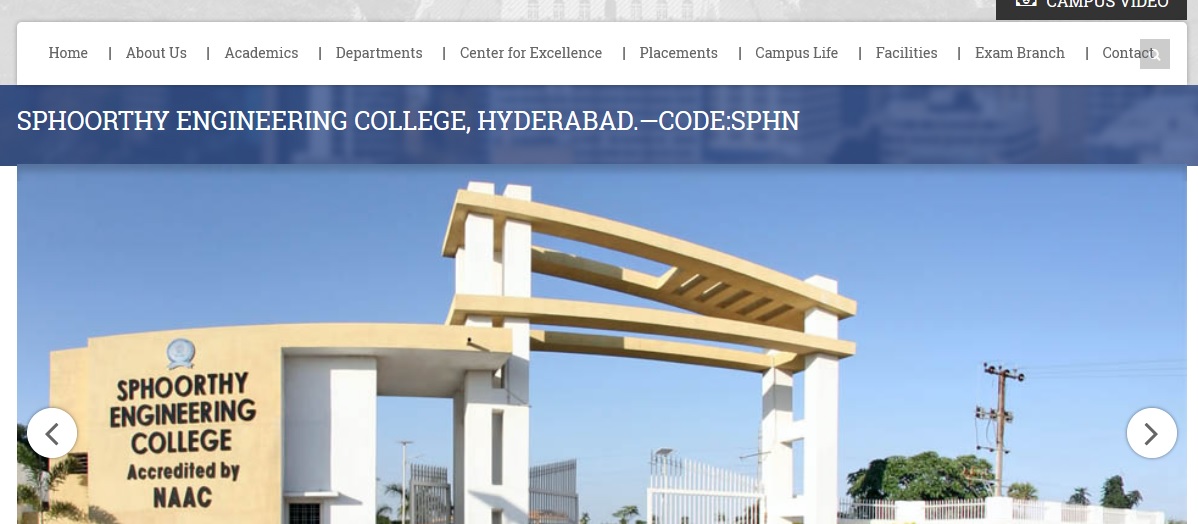RR311203 Computer Graphics B.Tech Question Paper : sphoorthyengg.com
Name of the College : Sphoorthy Engineering College
University : JNTUH
Department : INFORMATION TECHNOLOGY
Subject Name : COMPUTER GRAPHICS
Degree : B.Tech
Year/Sem : III/I
Website : sphoorthyengg.com
Document Type : Model Question Paper
Download Model/Sample Question Paper : https://www.pdfquestion.in/uploads/sphoorthyengg.com/4728-RR311203%20-%20COMPUTER%20GRAPHICS.pdf
Sphoorthy Computer Graphics Question Paper
B. Tech III Year I Semester Examinations, December-2011
(INFORMATION TECHNOLOGY)
Time: 3 hours
Max. Marks: 80
Related : Sphoorthy Linux Programming B.Tech Question Paper : www.pdfquestion.in/4832.html
Model Questions
Answer any five questions
All questions carry equal marks

Set – I
1.a) What is frame buffer? What is its role in graphics display?
b) Explain the construction of CRT display devices. What are its advantages and its advantages? [16]
2.a) Explain the steps in DDA algorithm for line generation.
b) Give a brief note about i) anti aliasing and ii) Half toning. [16]
3.a) What are the basic transformation techniques in 2-D graphics? What are their respective matrix representations?
b) Explain the steps involved in rotating an object about an arbitrary point. [16]
4.a) What is viewing transformation? Explain with suitable illustration.
b) Derive the transformation matrix for viewing transformation. [16]
5.a) Distinguish between 2 – buffer and painter’s algorithm.
b) Explain how the phang shading model is implemented. [16]
6.a) Classify the projections. Explain briefly about the characteristics of each.
b) Explain how the Hermit curve is generated. [16]
7.a) Give a brief note about Trimiscous color theory.
b) What is meant by rendering? What are its advantages to computer graphics.[16]
8.a) Distinguish between conventional and computer assisted animation.
b) Give a brief note about animation languages. [16]
Set – II
RRCode No: RR311203 SET-2
1.a) What are the basic transformation techniques in 2-D graphics? What are their respective matrix representations?
b) Explain the steps involved in rotating an object about an arbitrary point. [16]
2.a) What is viewing transformation? Explain with suitable illustration.
b) Derive the transformation matrix for viewing transformation. [16]
3.a) Distinguish between 2 – buffer and painter’s algorithm.
b) Explain how the phang shading model is implemented. [16]
4.a) Classify the projections. Explain briefly about the characteristics of each.
b) Explain how the Hermit curve is generated. [16]
5.a) Give a brief note about Trimiscous color theory.
b) What is meant by rendering? What are its advantages to computer graphics.[16]
6.a) Distinguish between conventional and computer assisted animation.
b) Give a brief note about animation languages. [16]
7.a) What is frame buffer? What is its role in graphics display?
b) Explain the construction of CRT display devices. What are its advantages and its advantages? [16]
8.a) Explain the steps in DDA algorithm for line generation.
b) Give a brief note about i) anti aliasing and ii) Half toning. [16]
Set – III
RRCode No: RR311203 SET-3
1.a) Distinguish between 2 – buffer and painter’s algorithm.
b) Explain how the phang shading model is implemented. [16]
2.a) Classify the projections. Explain briefly about the characteristics of each.
b) Explain how the Hermit curve is generated. [16]
3.a) Give a brief note about Trimiscous color theory.
b) What is meant by rendering? What are its advantages to computer graphics.[16]
4.a) Distinguish between conventional and computer assisted animation.
b) Give a brief note about animation languages. [16]
5.a) What is frame buffer? What is its role in graphics display?
b) Explain the construction of CRT display devices. What are its advantages and its advantages? [16]
6.a) Explain the steps in DDA algorithm for line generation.
b) Give a brief note about i) anti aliasing and ii) Half toning. [16]
7.a) What are the basic transformation techniques in 2-D graphics? What are their respective matrix representations?
b) Explain the steps involved in rotating an object about an arbitrary point. [16]
8.a) What is viewing transformation? Explain with suitable illustration.
b) Derive the transformation matrix for viewing transformation. [16]
Set – IV
Answer any five questions
All questions carry equal marks
1.a) Give a brief note about Trimiscous color theory.
b) What is meant by rendering? What are its advantages to computer graphics.[16]
2.a) Distinguish between conventional and computer assisted animation.
b) Give a brief note about animation languages. [16]
3.a) What is frame buffer? What is its role in graphics display?
b) Explain the construction of CRT display devices. What are its advantages and its advantages? [16]
4.a) Explain the steps in DDA algorithm for line generation.
b) Give a brief note about i) anti aliasing and ii) Half toning. [16]
5.a) What are the basic transformation techniques in 2-D graphics? What are their respective matrix representations?
b) Explain the steps involved in rotating an object about an arbitrary point. [16]
6.a) What is viewing transformation? Explain with suitable illustration.
b) Derive the transformation matrix for viewing transformation. [16]
7.a) Distinguish between 2 – buffer and painter’s algorithm.
b) Explain how the phang shading model is implemented. [16]
8.a) Classify the projections. Explain briefly about the characteristics of each.
b) Explain how the Hermit curve is generated. [16]